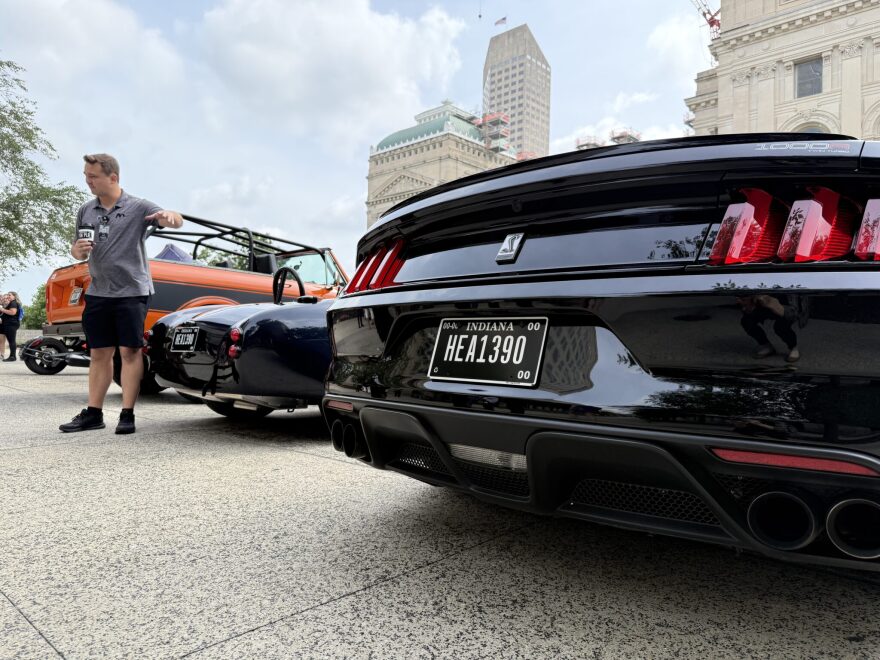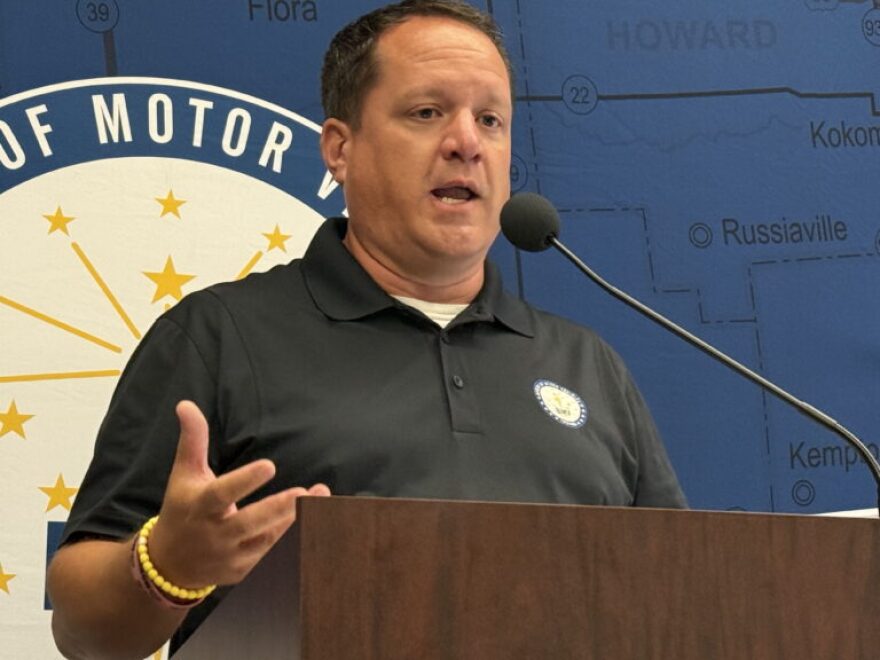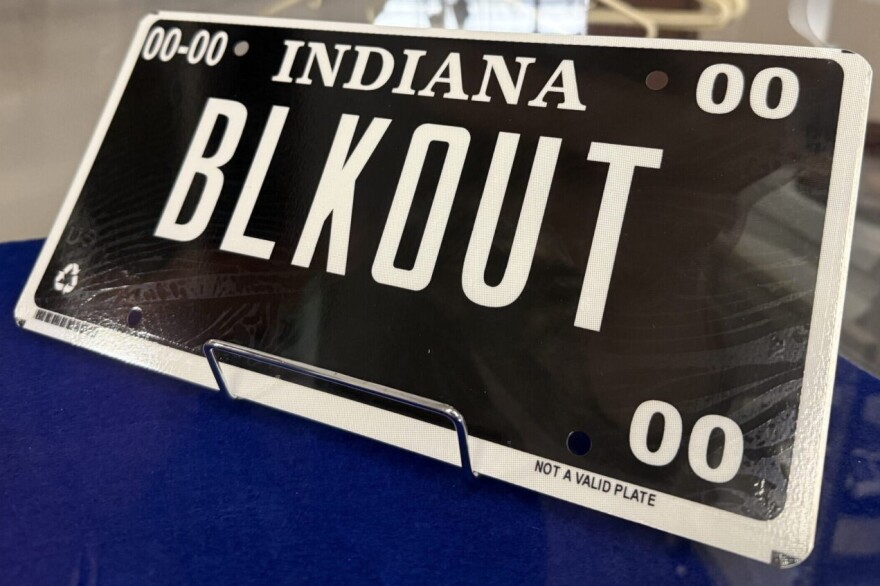Indiana drivers will soon have a new option at the license branch: the state’s first all-black license plate.
The Indiana Bureau of Motor Vehicles officially revealed the “blackout” plates on Monday, joining a growing number of states offering the “minimalist” design.
Beginning Aug. 8, the plate will be available for all Hoosier drivers registering a passenger car, light truck under 11,000 pounds, motorcycle, or RV.
A disability-accessible version will be released at a later date, according to agency officials.
“It’s very simple in its design, but it really gives car drivers and vehicle owners an opportunity to express themselves in a way that they haven’t had,” BMV Commissioner Kevin Garvey said at Monday’s launch event, held at the Indiana Government Center in downtown Indianapolis. “It’s a form of expression for them.”
‘Popular demand’ — and legislative backingIowa, Kentucky, Minnesota, Mississippi and other states have already adopted similar plates.
Hoosier lawmakers authorized the plate during the 2025 legislative session in House Enrolled Act 1390, a wide-ranging BMV agency measure.
Bill author Rep. Jim Pressel, R-Rolling Prairie, said earlier this year that blackout plates would give Hoosier more options at the BMV and provide the state with “really simple” additional revenue that could total into the millions.
“The feedback that we have gotten from Hoosiers would tell me it’s going to be popular,” Garvey said. “But we really want to try to wait and see.”

The blackout plate will carry an annual fee of $45, with an additional $45 fee if drivers opt for a personalized plate number. Personalized messages can contain up to seven characters and one space.
Drivers don’t have to wait for their current plate to expire, though; they can swap to the blackout plate early for an additional $9.50 fee.
BMV officials said the replacement charge helps offset the cost of the new metal plate, which otherwise would be replaced on a standard seven-year cycle.
The plate must be ordered through a BMV branch and cannot be purchased online or at a kiosk if it’s a replacement prior to expiration. For new registrations and renewals, it will be available via myBMV.com, at BMV Connect kiosks, or in person.
Officials also warned customers to avoid third-party sites claiming to offer Indiana blackout plates. Only BMV-issued plates are legally valid.
The design cannot be combined with any specialty or graphic plate options. But Garvey said other plate designs could be made available in the future. He pointed to Michigan for example, which additionally offers license plates with blue and green backgrounds.
A new BMV revenue sourceUnlike most specialty plates, which largely cover only production costs, the blackout plate is expected to generate upwards of $3 million in revenue for the state in the first year of availability.
The BMV will collect a bulk of the fees from each blackout plate — far more than the $5 the agency gets from other specialty plates, Garvey said.

A legislative fiscal analysis showed that most of the revenue — $34 — will go to the BMV Commission Fund to support agency operations. The remaining amount is split between the Motor Vehicle Highway Account ($7) and the Crossroads 2000 Fund ($4).
Of the share sent to the highway account, $4.34 will benefit the Indiana Department of Transportation, while $2.66 will be distributed to local governments.
Garvey was cautious, however, about forecasting exact revenue potentials but said the agency anticipates around 100,000 blackout plates to be sold over the next 12 months.
He looked to Minnesota, which launched its blackout option in 2024 and sold more than 250,000 plates in its first year. Iowa, home to the country’s longest-running blackout program since 2019, now has nearly 586,000 blackout plates on the road — roughly 12% of all plates issued there
“This is a revenue source for the bureau,” Garvey said. “We’re excited about the potential to reinvest that revenue back into our employees, but also into the agency.”
That includes fulfilling an executive order from Gov. Mike Braun directing the BMV to modernize and invest in new technology to improve customer service, the commissioner noted.
“There are over 6 million vehicles on the road (in Indiana), and we want to make sure that if folks want to get one of these, they know about it and are able to do so,” Garvey said. “This is going to be really, really exciting, and we’re certainly looking forward to seeing what happens.”
Indiana Capital Chronicle is part of States Newsroom, a nonprofit news network supported by grants and a coalition of donors as a 501c(3) public charity. Indiana Capital Chronicle maintains editorial independence. Contact Editor Niki Kelly for questions: info@indianacapitalchronicle.com.


